This article explains how to start using CodeGuard to backup and restore your website/database.
Step 1: Log in to your control panel. Learn how
Step 2: Navigate to the Order View.
Search the domain name for which you have purchased the CodeGuard order and select the domain to view the order information.
Step 3: Get your FTP details.
When you log in to the CodeGuard dashboard for the first time, you have to add your website FTP details.
If the FTP details are not available, you can fetch them for an existing FTP user. This process is explained below for a couple of commonly used hosting control panels:
In case of other hosting providers, you can choose either the FTP or SFTP option, based on your service provider's settings.
You need to consult their support team or documentation for more specific instructions.
i. cPanel
-
In your cPanel, under the FILES section click FTP Accounts.
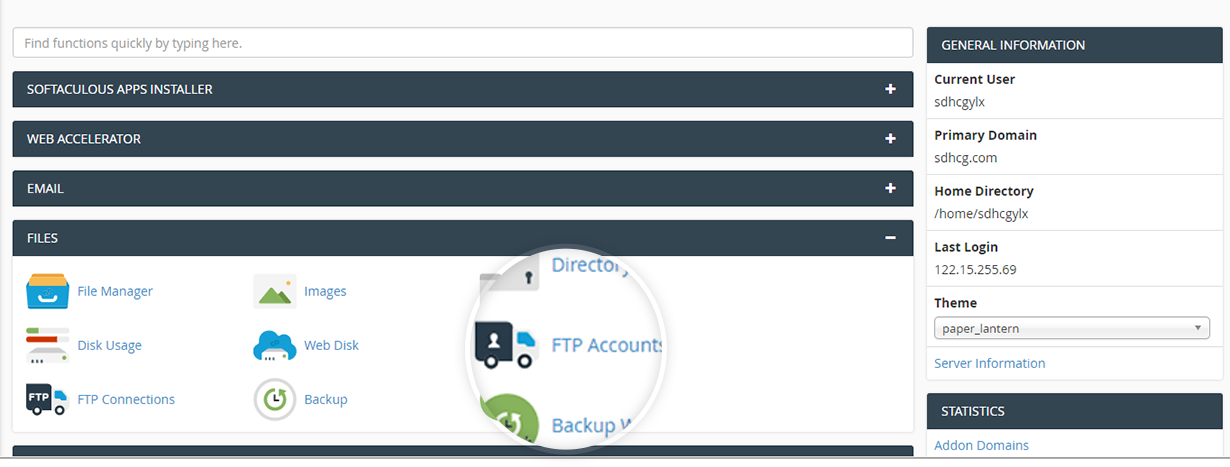
-
Under the FTP Accounts section, click the Change Password link for the existing FTP user that you want to set up with CodeGuard.
In case of Demo Registrar's Linux servers, you must use the default FTP user that comes with your cPanel account. You cannot connect to CodeGuard using any other FTP user.
-
In your cPanel under the Server Information section, note down the IP address of your server.
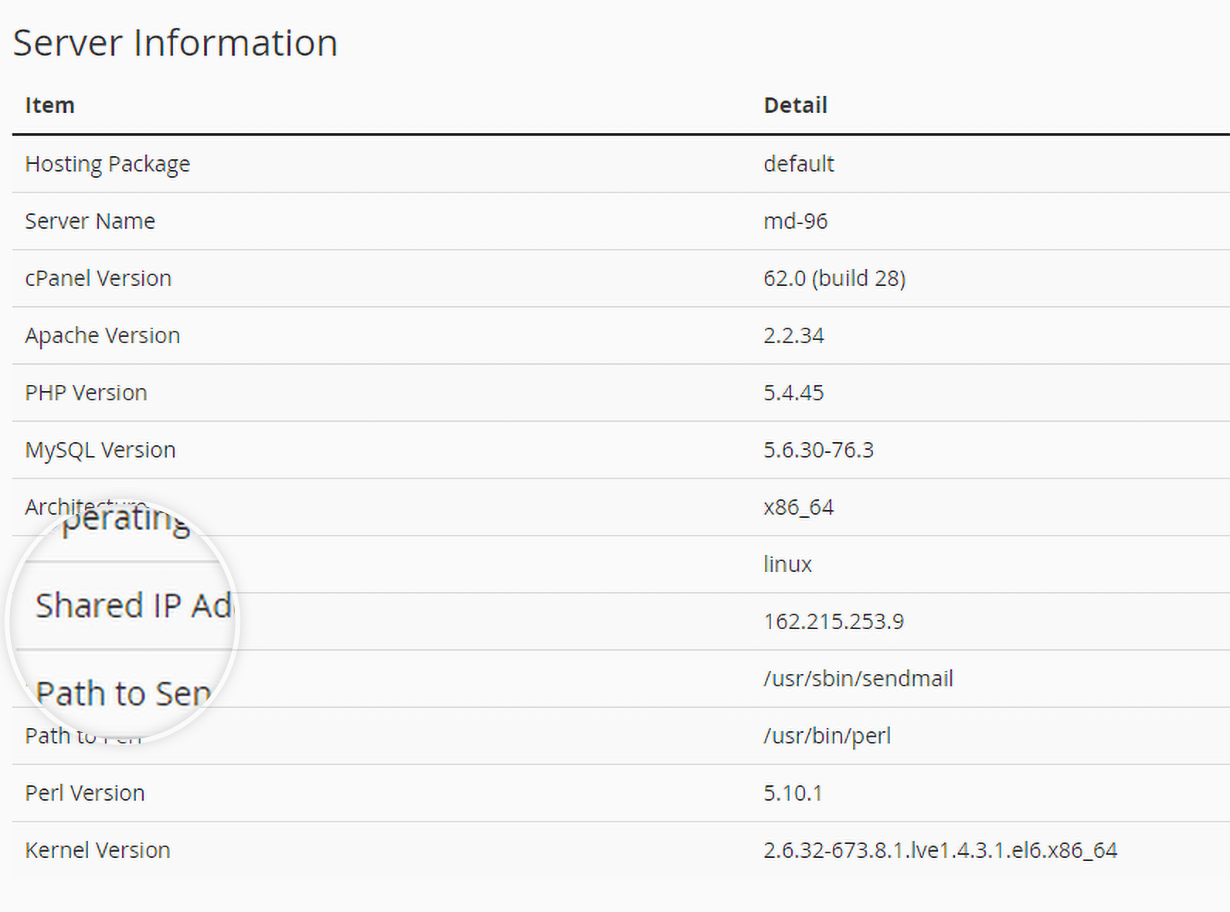

ii. Plesk
-
In the Plesk control panel, click the FTP Access link.
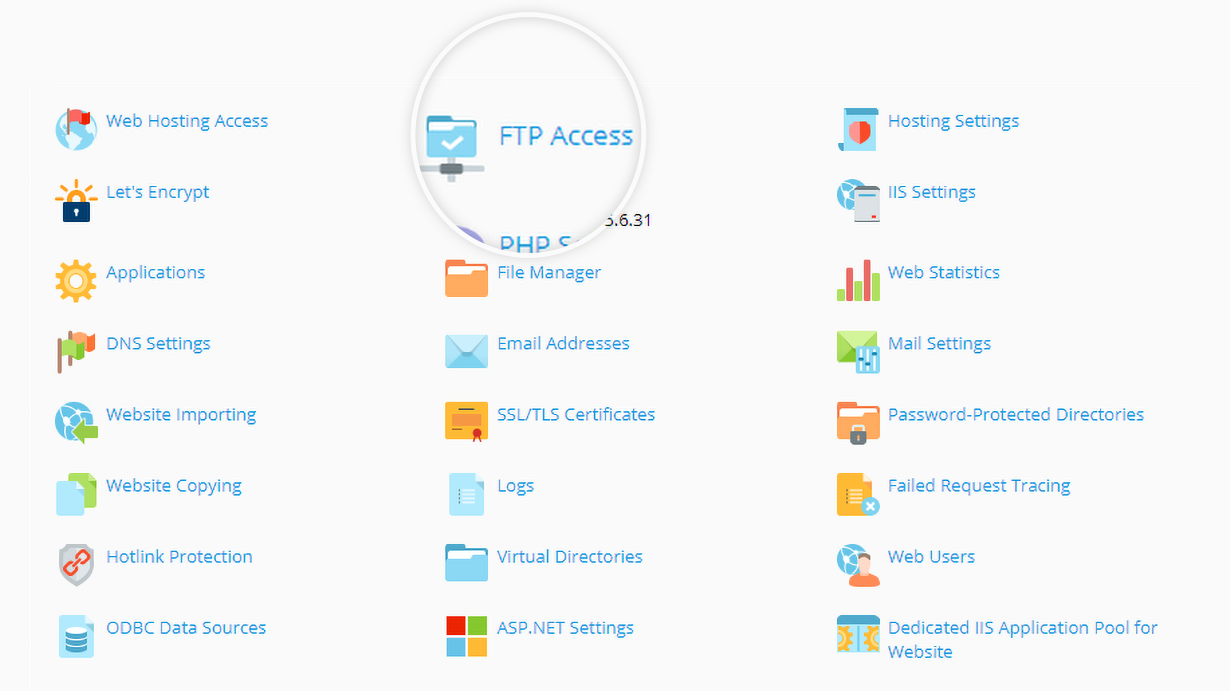

-
Under the FTP accounts section, click the FTP user link for an existing FTP user.
-
Modify the password for the FTP user.
Here, note down the IP address of the server listed in the IP Addresses field.
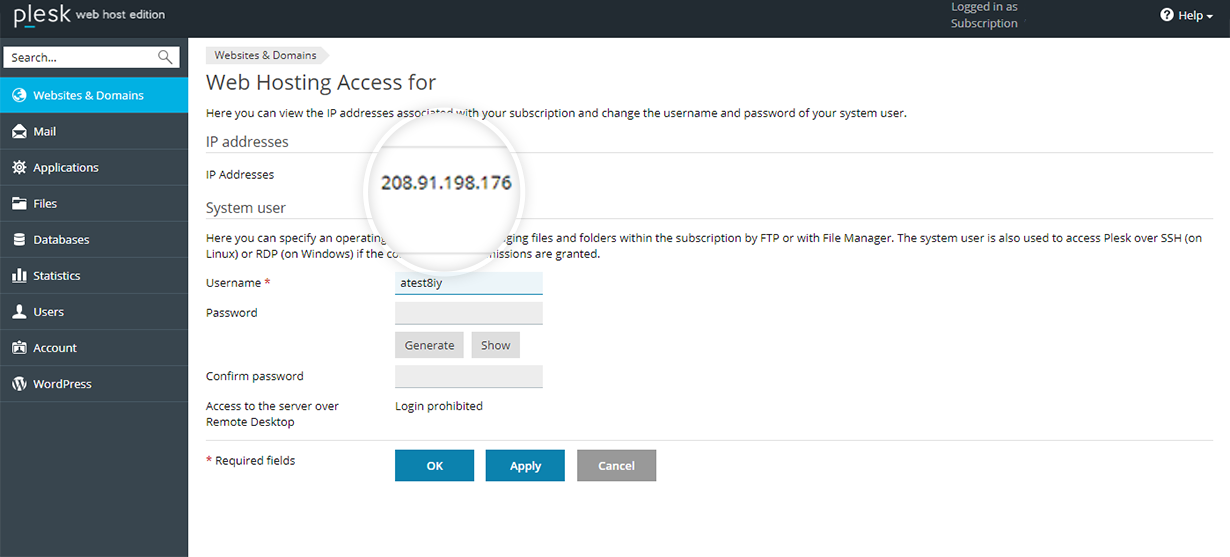
Step 4: Access the dashboard.
i. Adding a website to your CodeGuard account.
-
Click Go to Codeguard Dashboard to access your dashboard.
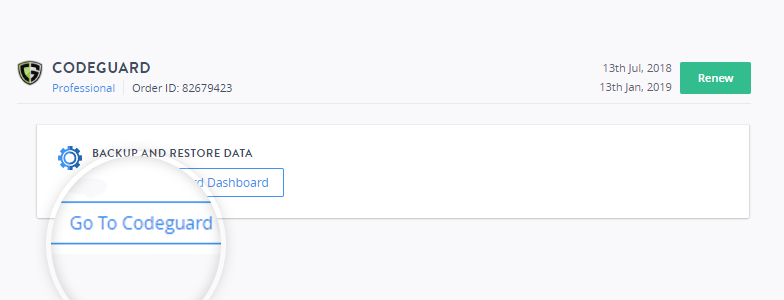
-
Provide your website FTP details.
If your website is hosted on Demo Registrar's Linux servers use the SFTP option and for Demo Registrar's Windows servers, use the FTP option.
Click Test Website Connection to proceed.
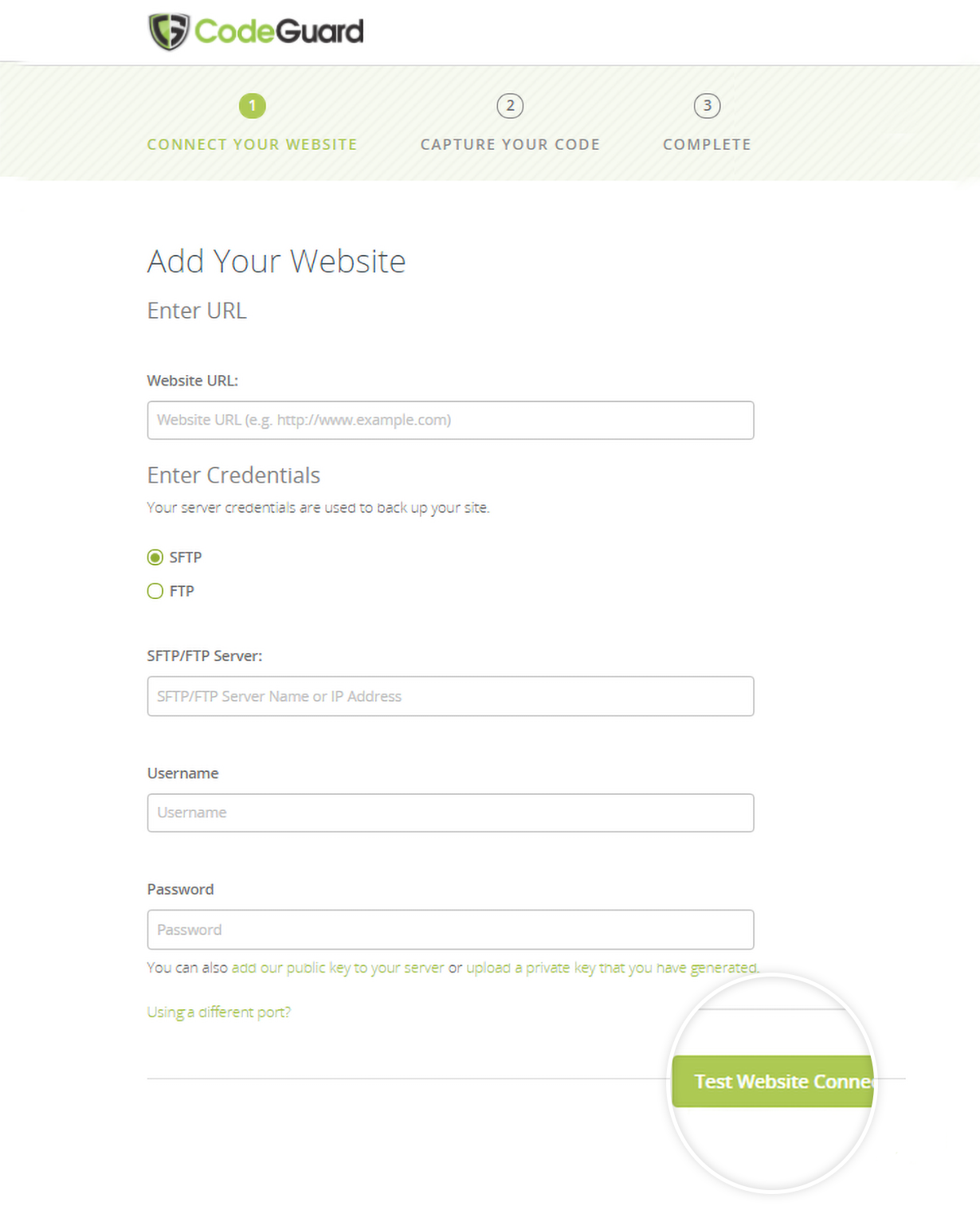
-
Once the connection has been established successfully, you will see the file structure of your website. Select the base folder that has all your website content and click Select Root Directory to proceed.
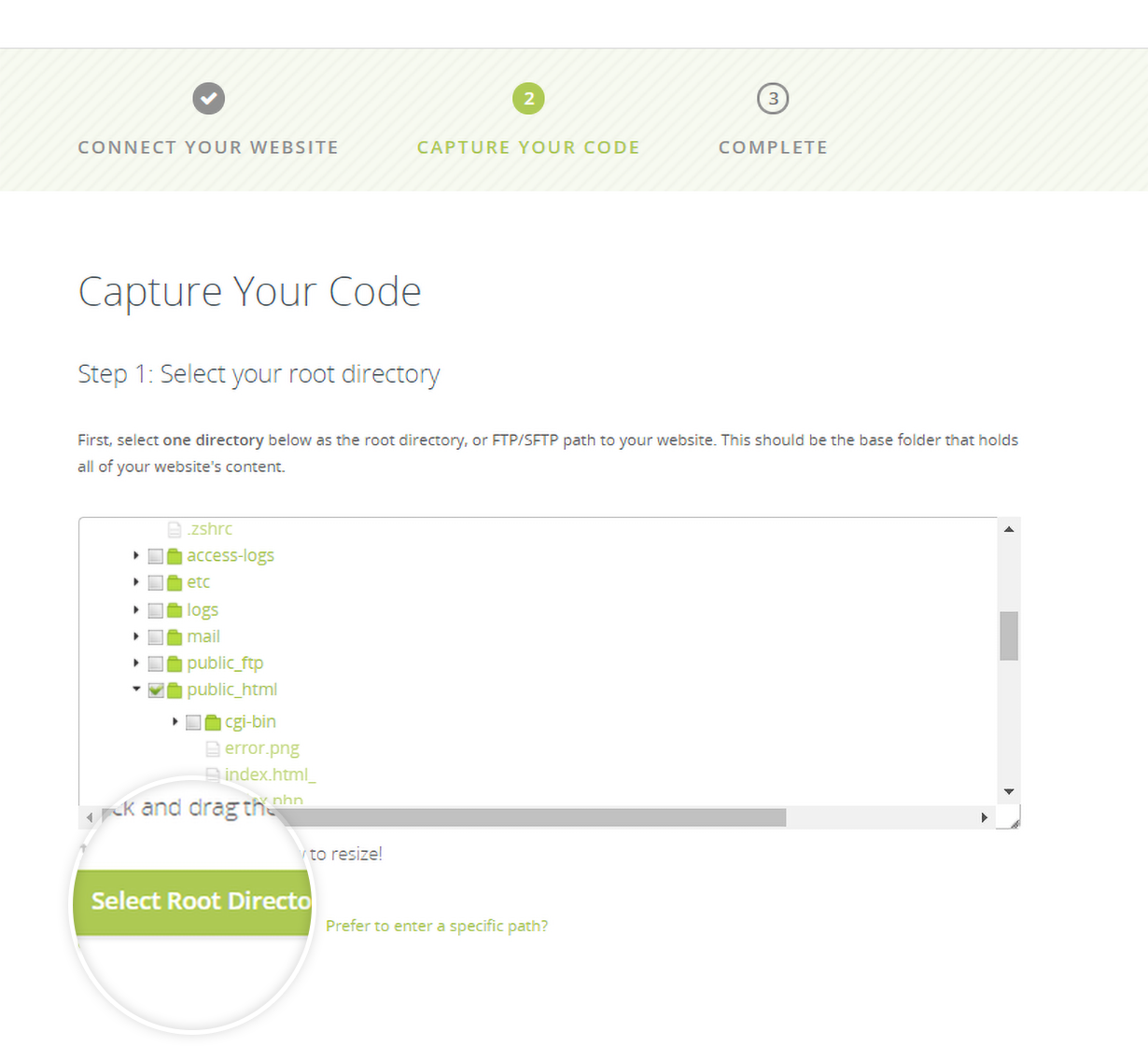
-
Select the files you want to backup and click Begin First Backup.
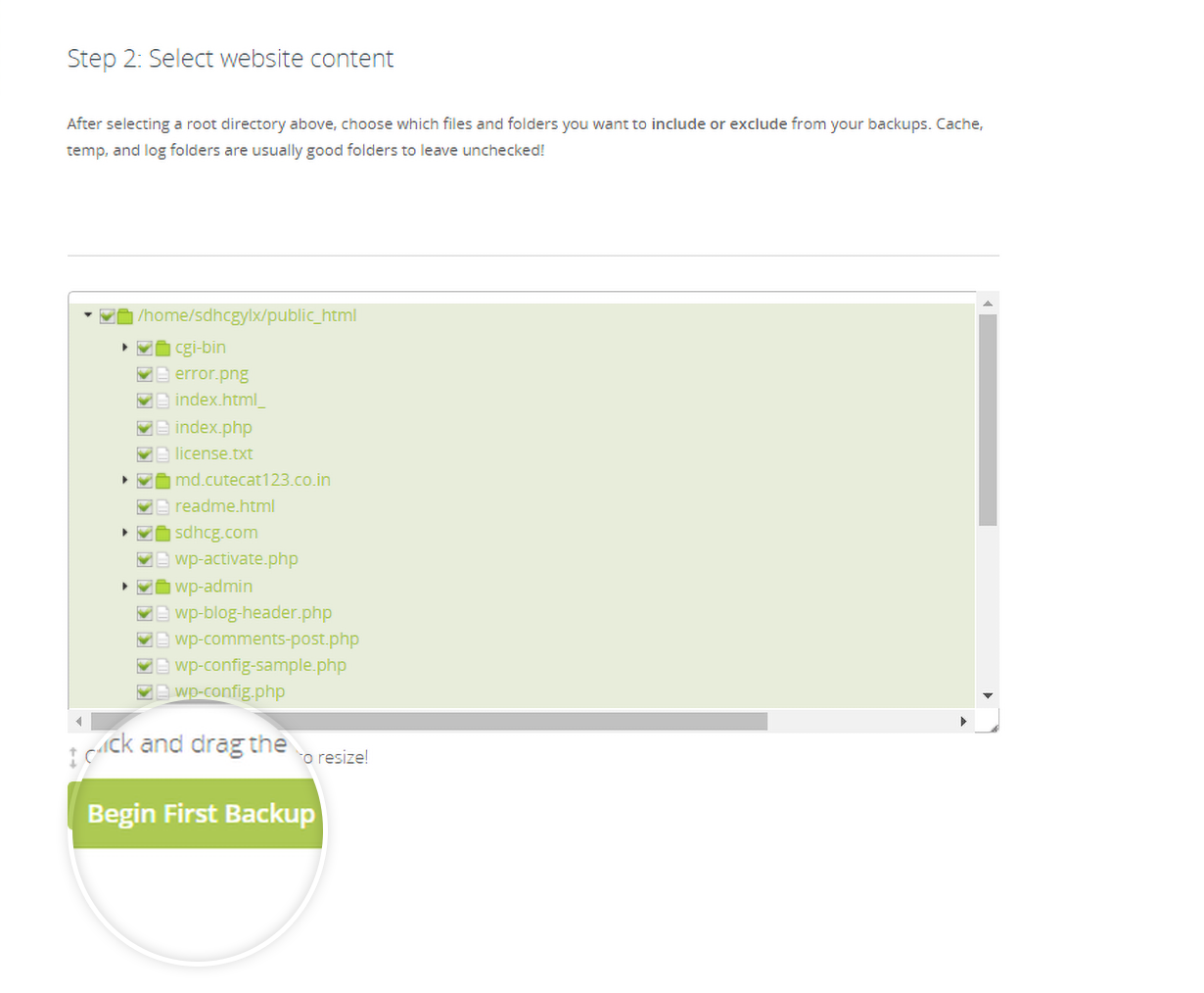
-
Once the backup process starts, you can view its progress.
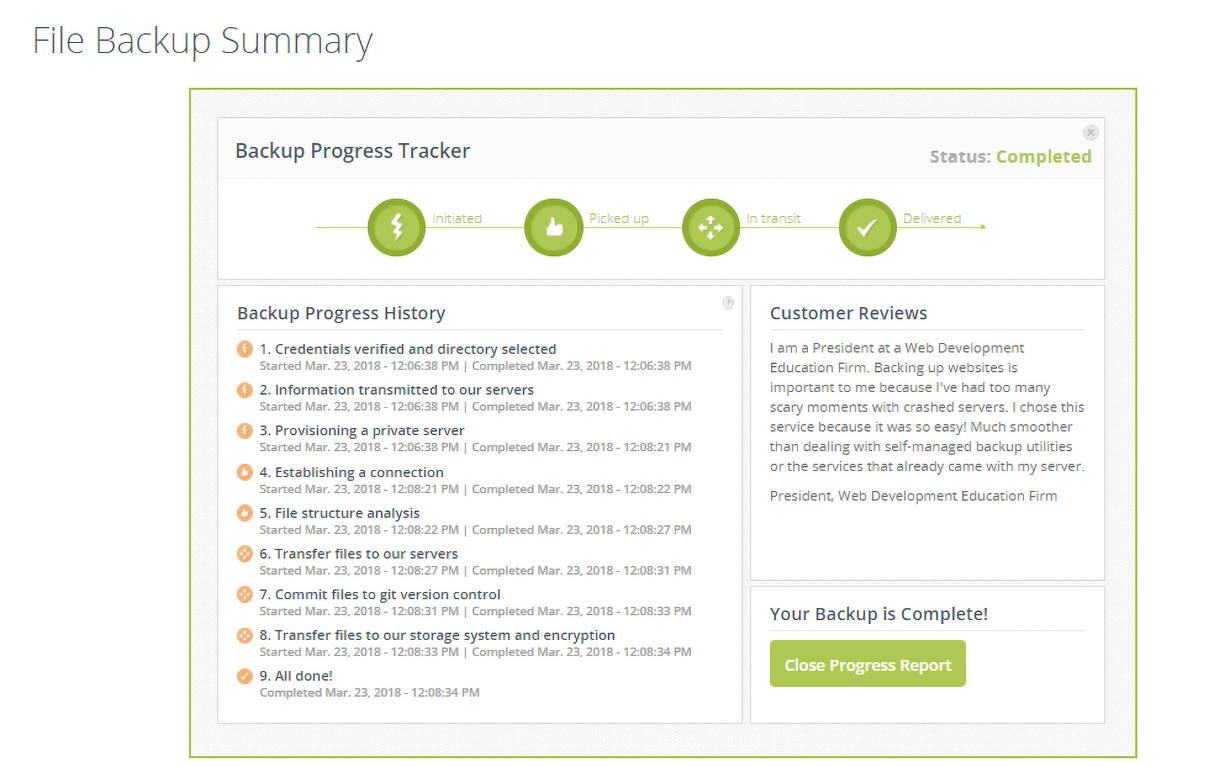
ii. Adding a database to your CodeGuard account.
-
Visit the CodeGuard dashboard, as explained above and click go to the Databases tab.
-
In the next screen, click Add Database.
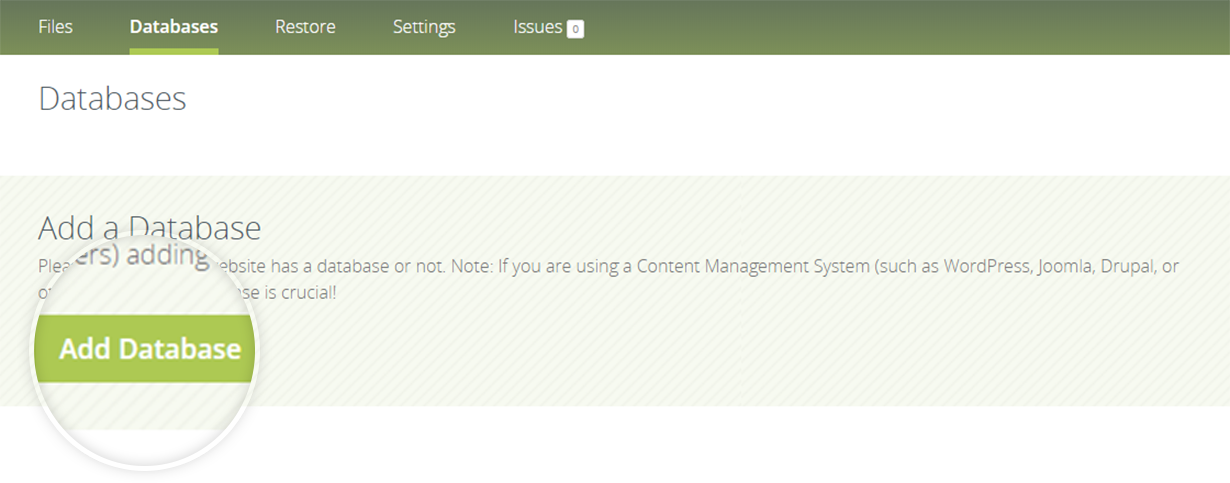
-
When you add a new database to CodeGuard, you can test the server connectivity by providing the database hostname or the IP address.
You can locate the IP address of the database server as mentioned below:
NoteThe process of database management varies for different hosting providers. You need to consult their support team or documentation for more specific instructions.
-
cPanel: In the cPanel, look out for the IP address under the Stats section.
-
Plesk: In the Plesk control panel, click on the Databases link.
In the next screen, locate the IP address under the Database server column.
-
-
Add the IP address and click Test Connection.
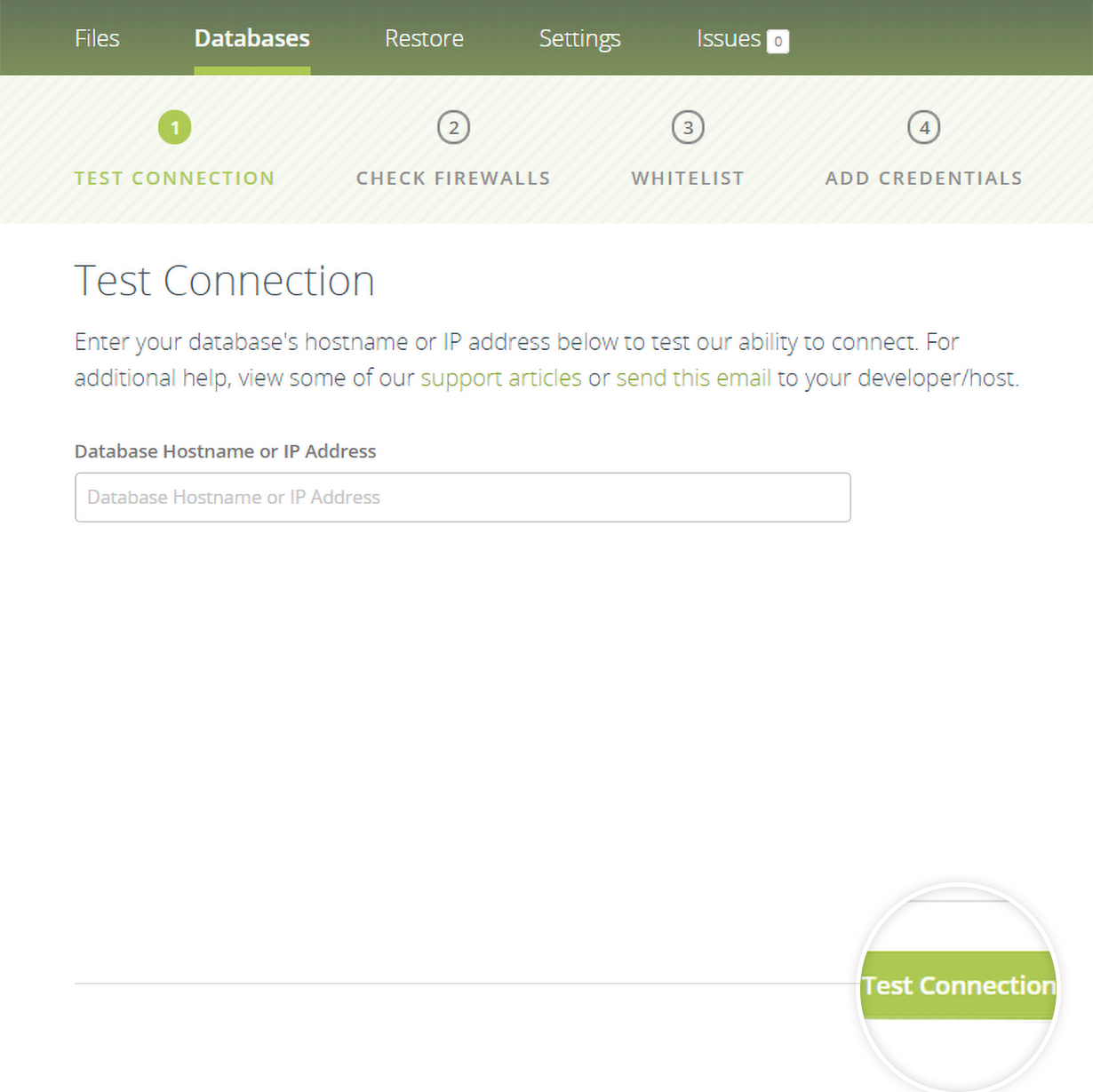
-
To make sure CodeGuard can connect to your database, you may need to allow incoming connections on your firewall.
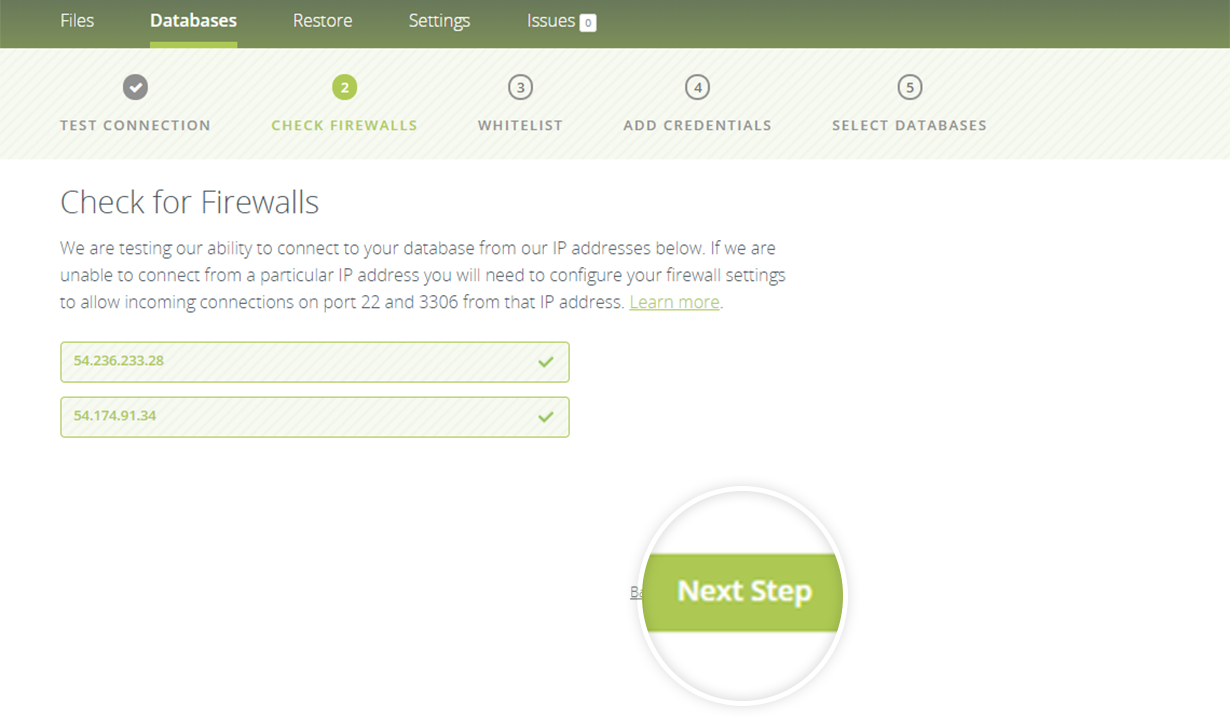
-
Before you proceed, for direct MySQL connection, ensure that the IP addresses listed on the website are whitelisted in your hosting control panel.
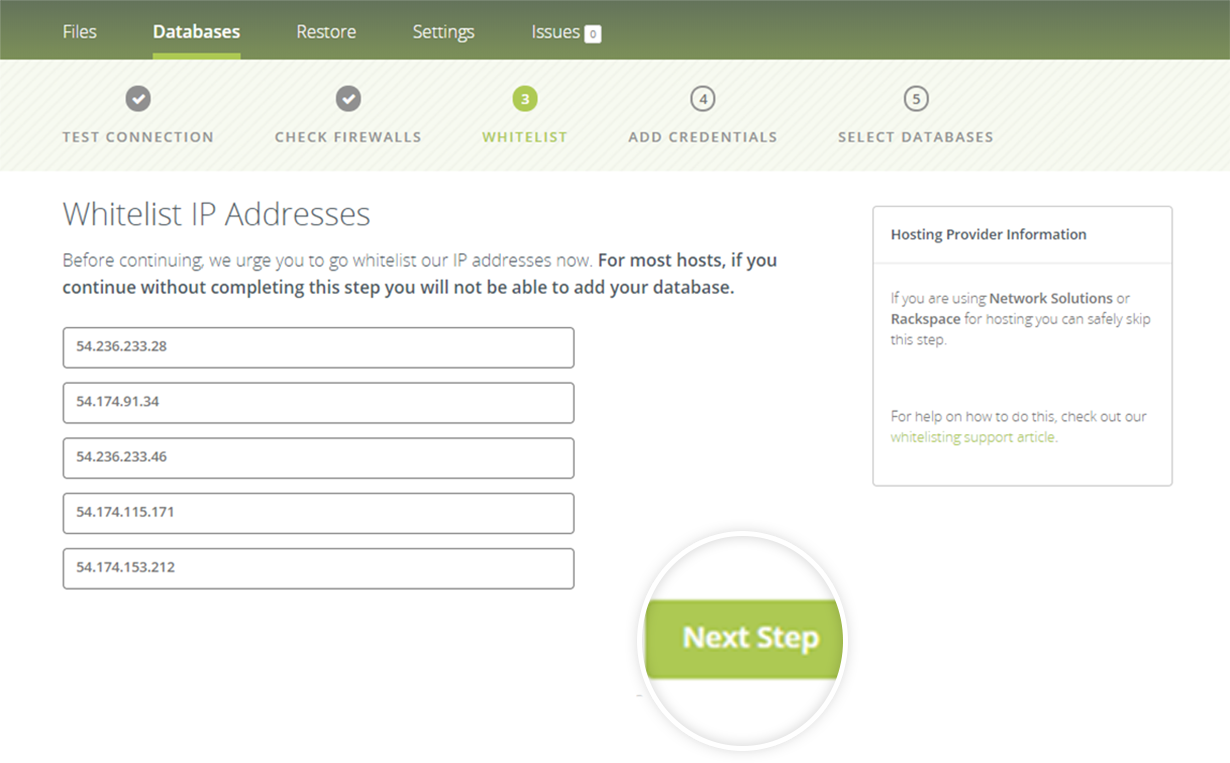
-
In the cPanel, under the Databases section, click Remote MySQL.
Add the IP addresses to the Access Hosts list individually.
In case of Demo Registrar's servers, only the Direct MySQL option is supported.
If SSH has been enabled for your hosting account, you can connect to the database over SSH. Here, choose the Tunnel over SSH option.
-
Here, you need to add your database details.
If the database details are not available, you can get these details from your current hosting panels.
-
cPanel:
-
In the cPanel, under the Databases section, click MySQL Databases.
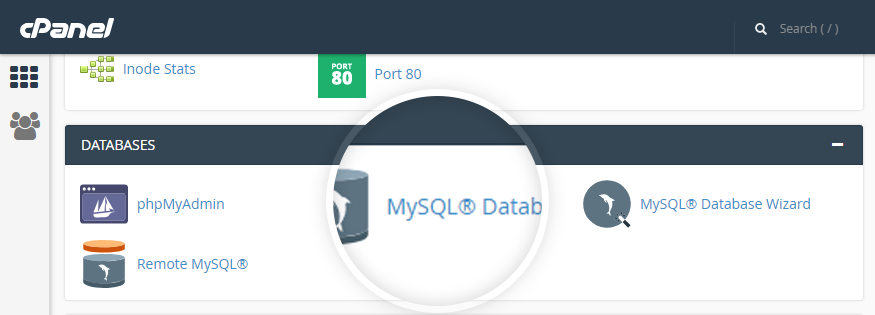
-
Under the Current Users section, click the database user link for an existing user and modify the password for the user.
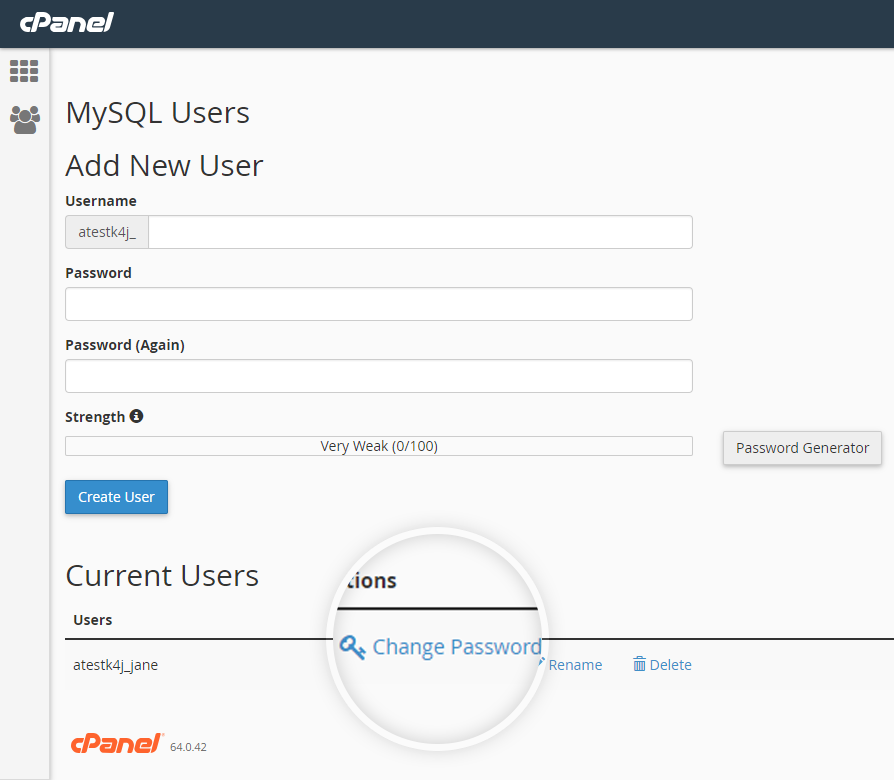
-
-
Plesk:
-
In the Plesk control panel, click Databases.
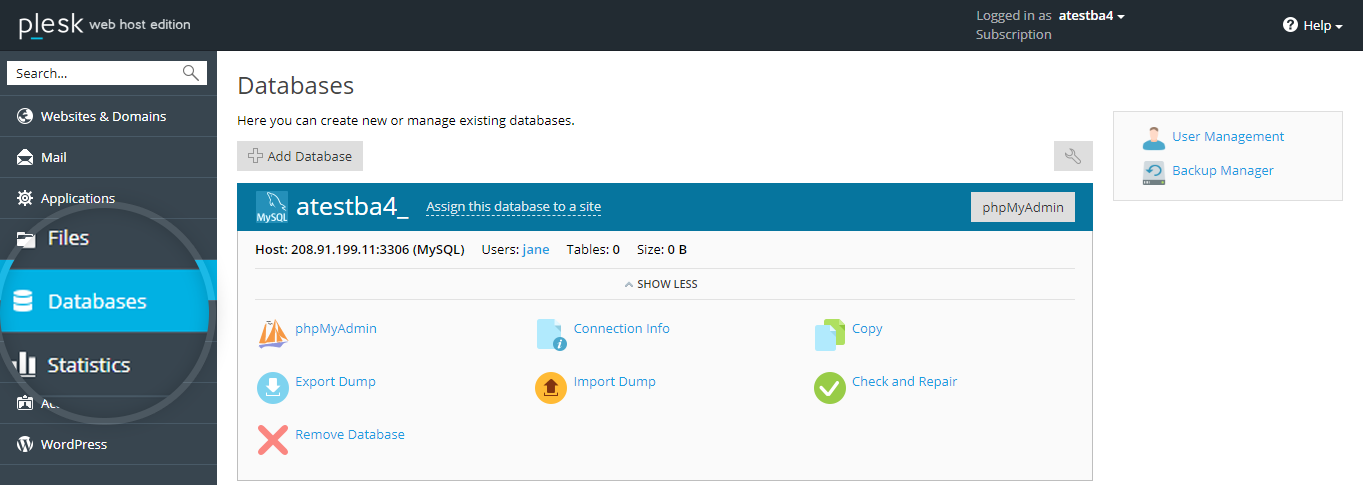
-
Here, you can view a list of existing databases. Click the Users Management tab in the right corner.
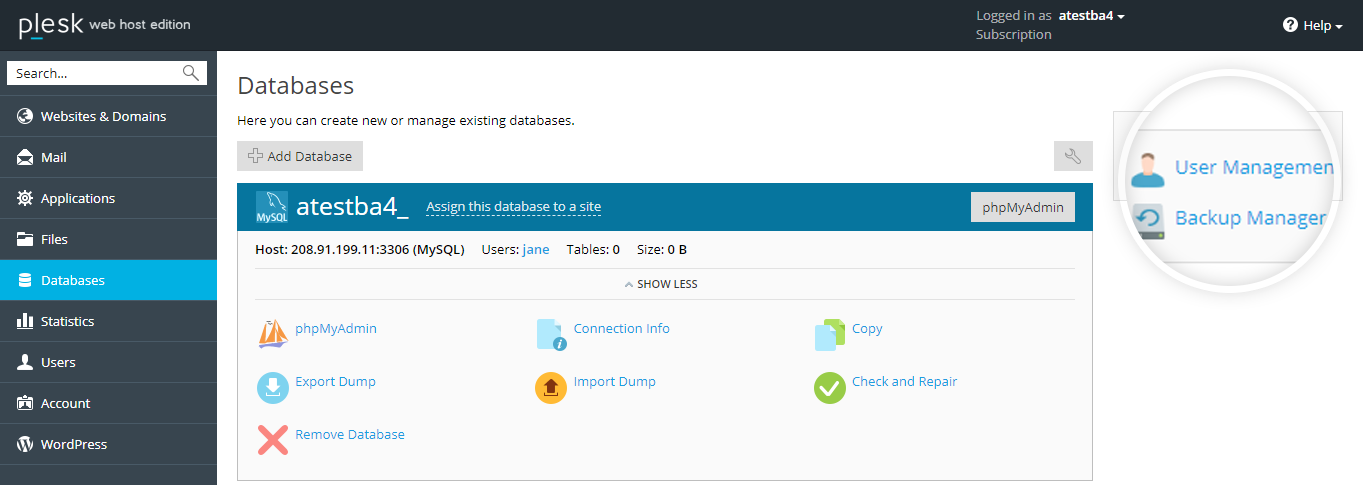
-
You can now view a list of existing databases users. Click on the user name, modify the password and click OK
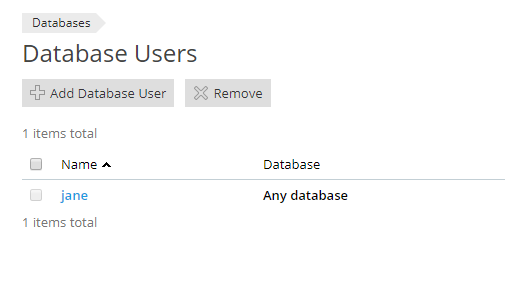
-
-
-
Once the connection has been established successfully, enter your database details and click Next Step.
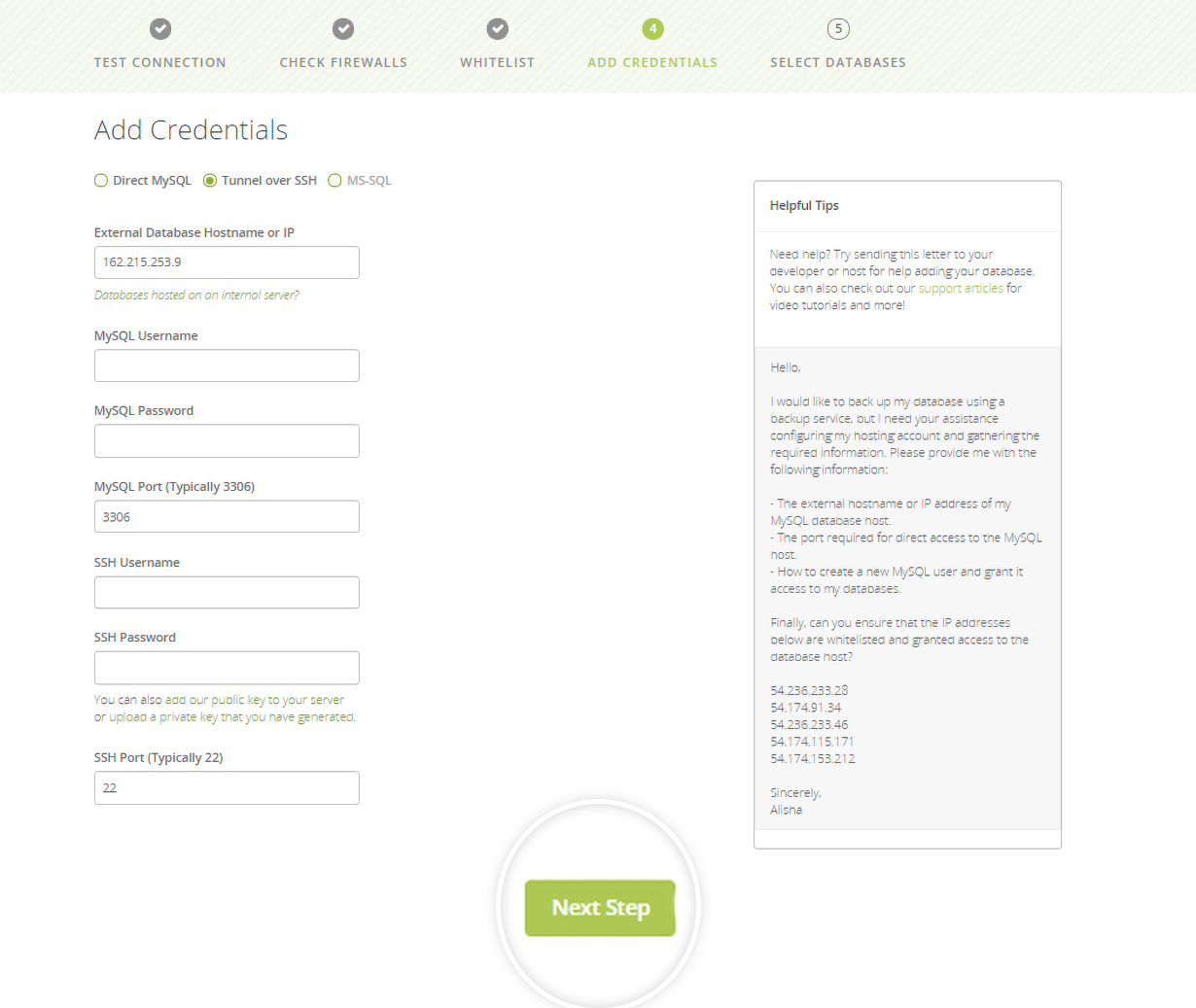
-
Select the database to be added and click Add Databases. CodeGuard will then start an initial backup process.
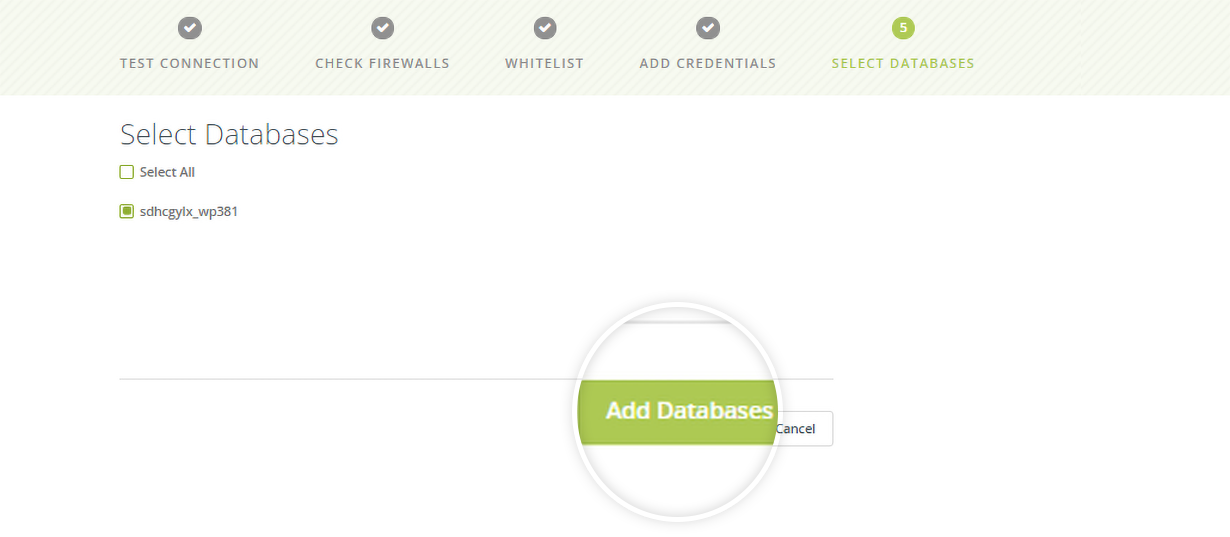
-
Once the backup process starts, you can view its progress.
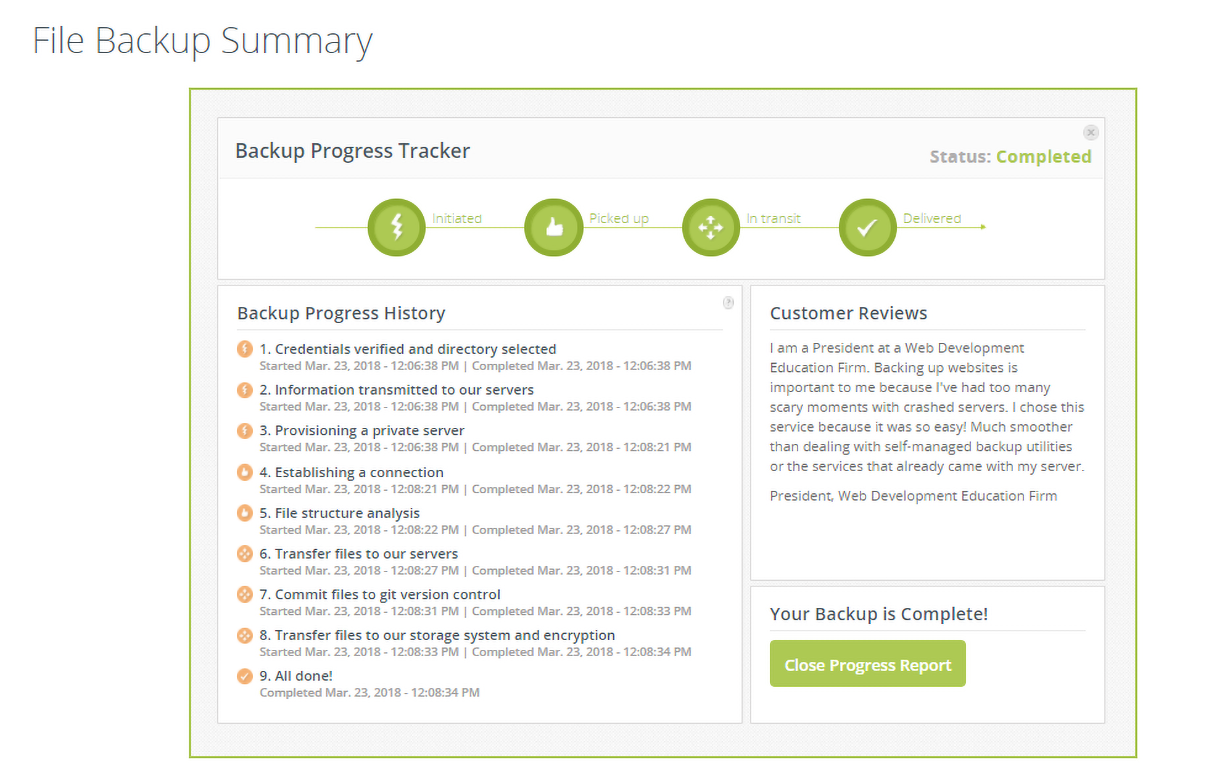
This completes the process of adding a website and a database to your CodeGuard account. CodeGuard will now regularly check your website and database and will take a backup if any changes are detected.